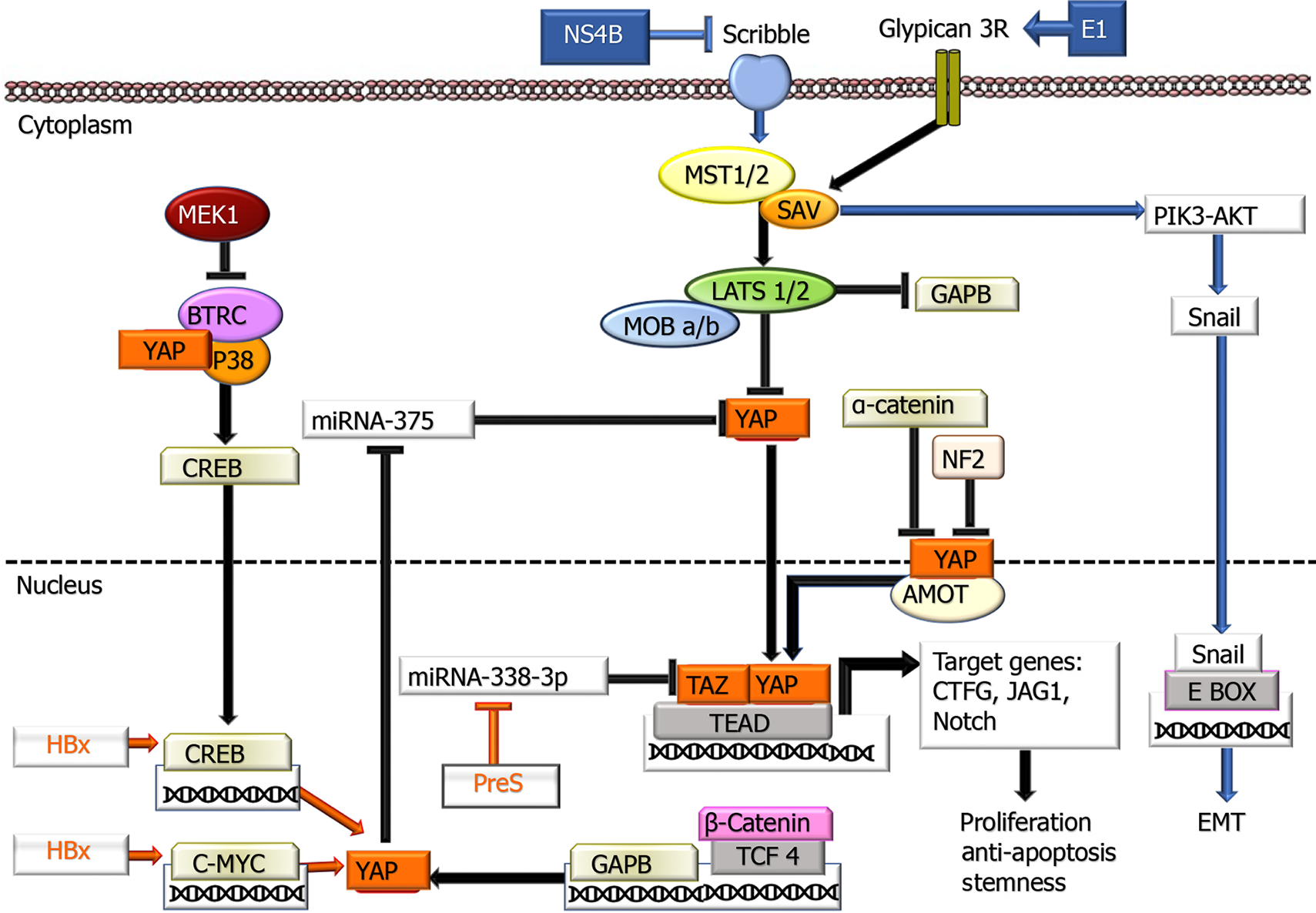Copyright
©The Author(s) 2021.
World J Clin Cases. Jul 6, 2021; 9(19): 4890-4917
Published online Jul 6, 2021. doi: 10.12998/wjcc.v9.i19.4890
Published online Jul 6, 2021. doi: 10.12998/wjcc.v9.i19.4890
Figure 3 Involvement of hepatitis B virus and hepatitis C virus proteins in the Hippo-Make-TAZ signaling pathway.
In the cytoplasm, YAP/TAZ proteins are inactivated by phosphorylation leading to their cytoplasmic retention. When YAP/TAZ is dephosphorylated, they can translocate into the nucleus and activate the transcription of their target genes through the interaction with the TEA domain transcription factor Scalloped transcription factors. Additionally, YAP stabilizes CREB through interacting with p38MAPK and beta-transducin repeat containing E3 ubiquitin protein ligase. MEK1 also inhibits the latter. On the other hand, GABP is negatively regulated by the Hippo signaling pathway. AMOT: Actin-associated protein angiomotin; BTRC: Beta-transducin repeat containing E3 ubiquitin protein ligase; CREB: cAMP response element-binding protein; LATS1/2: Large tumor suppressor kinase 1 and 2; MST1/2: Mammalian sterile 20-like kinase 1 and 2; P38 MAPK: P38 mitogen-activated protein kinase; NF2: Neurofibromin 2; SAV1: The adaptor proteins Salvador 1; Scribble: A basolateral polarity factor; TEAD: TEA domain transcription factor Scalloped; TCF4: Transcription factor 4; ⊥: Inhibition.
- Citation: Elpek GO. Molecular pathways in viral hepatitis-associated liver carcinogenesis: An update. World J Clin Cases 2021; 9(19): 4890-4917
- URL: https://www.wjgnet.com/2307-8960/full/v9/i19/4890.htm
- DOI: https://dx.doi.org/10.12998/wjcc.v9.i19.4890









